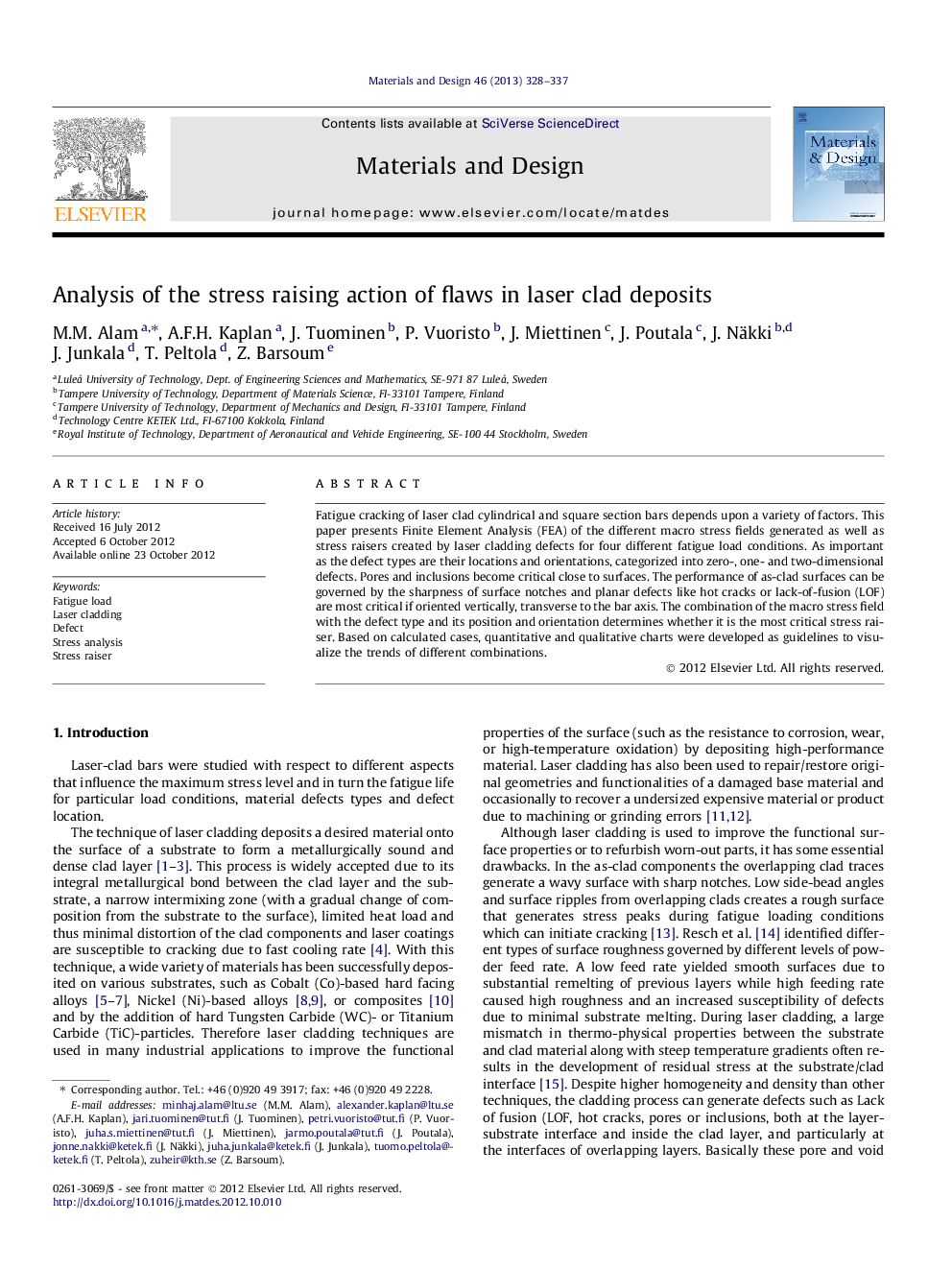| Article ID | Journal | Published Year | Pages | File Type |
|---|---|---|---|---|
| 830153 | Materials & Design (1980-2015) | 2013 | 10 Pages |
Fatigue cracking of laser clad cylindrical and square section bars depends upon a variety of factors. This paper presents Finite Element Analysis (FEA) of the different macro stress fields generated as well as stress raisers created by laser cladding defects for four different fatigue load conditions. As important as the defect types are their locations and orientations, categorized into zero-, one- and two-dimensional defects. Pores and inclusions become critical close to surfaces. The performance of as-clad surfaces can be governed by the sharpness of surface notches and planar defects like hot cracks or lack-of-fusion (LOF) are most critical if oriented vertically, transverse to the bar axis. The combination of the macro stress field with the defect type and its position and orientation determines whether it is the most critical stress raiser. Based on calculated cases, quantitative and qualitative charts were developed as guidelines to visualize the trends of different combinations.
► Laser clad defects are 0D-pores/inclusions, 1D-clad waviness or 2D-planar defects. ► Surface pore of laser clad bar initiates fatigue cracks. ► Side edge surface pores are more critical than in-clad surface pores. ► Smaller notch radius and angle of as-laser clad surface raises stress significantly. ► Planar inner defects grow faster towards surface.
